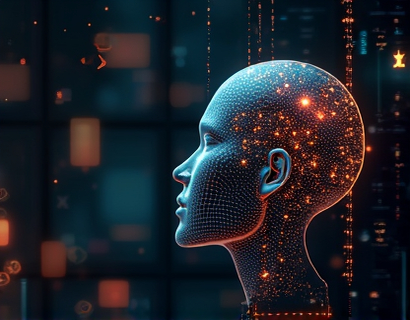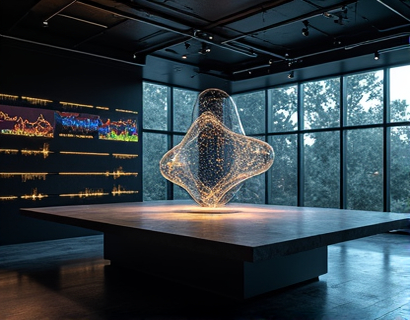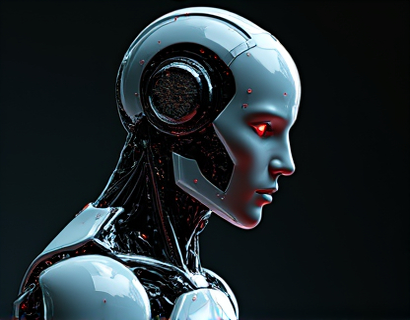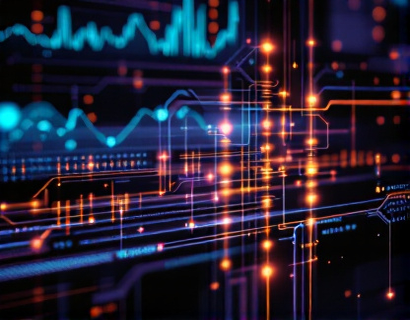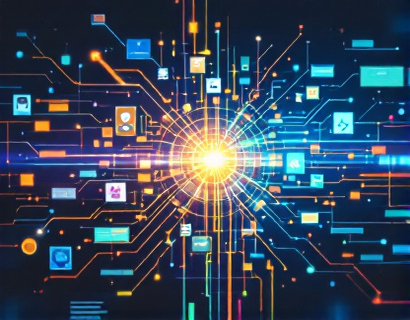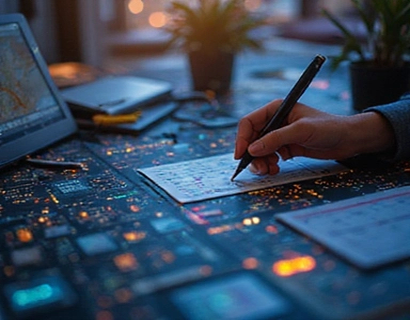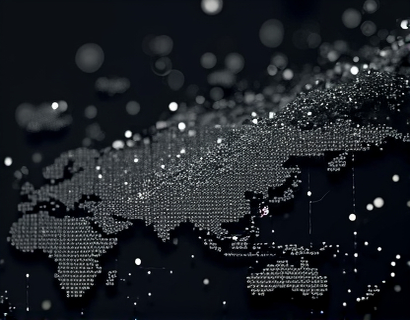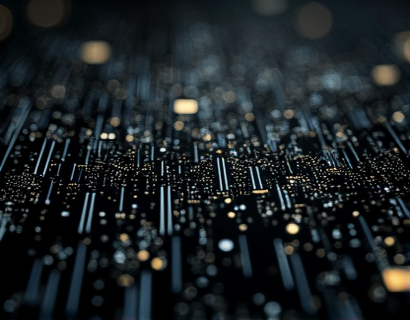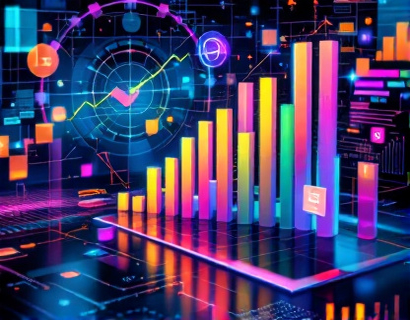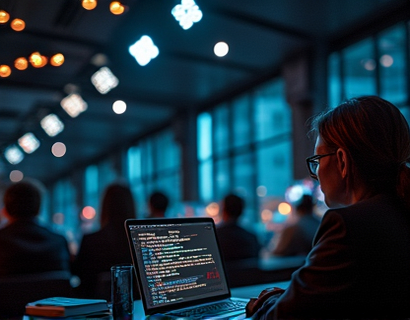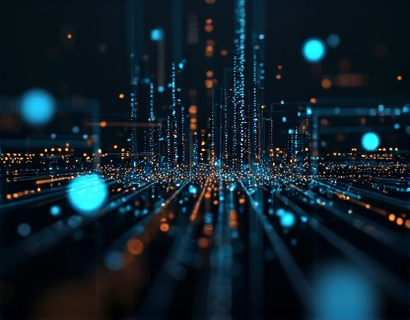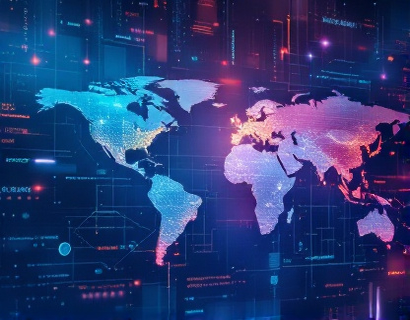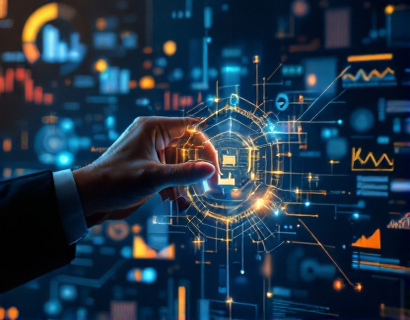Unlocking Next-Gen Productivity: The Synergy of Crypto and AI
The digital age has ushered in a revolution in productivity, driven by the powerful combination of cryptocurrency and artificial intelligence. This synergy is reshaping the way tech enthusiasts and digital visionaries approach tasks, offering innovative solutions that streamline processes and enhance efficiency. As we delve into this topic, it's essential to understand the foundational technologies and their applications, as well as the potential future developments that could redefine productivity in the years to come.
Cryptocurrency, since its inception with Bitcoin in 2009, has evolved from a niche digital currency to a transformative force in various industries. Beyond its role as a medium of exchange, cryptocurrencies leverage blockchain technology to provide secure, transparent, and decentralized systems. This technology underpins not only financial transactions but also a wide array of applications, from supply chain management to identity verification. The immutable and tamper-proof nature of blockchain makes it an ideal foundation for building trust and efficiency in digital interactions.
Artificial intelligence, on the other hand, has been rapidly advancing, driven by improvements in machine learning, natural language processing, and computational power. AI's ability to analyze vast amounts of data, recognize patterns, and make predictions has opened up new possibilities in fields ranging from healthcare to finance. When combined with the security and transparency of blockchain, AI can achieve unprecedented levels of performance and reliability. This convergence is giving rise to innovative digital solutions that are redefining productivity in the modern workplace.
Enhancing Task Management with Blockchain and AI
One of the most immediate areas where crypto and AI are making an impact is in task management and project coordination. Traditional project management tools often suffer from issues like data silos, lack of transparency, and manual overhead. By integrating blockchain and AI, new platforms can offer a more seamless and efficient experience.
For instance, a blockchain-based task management system can ensure that all tasks and their statuses are recorded in a transparent and immutable ledger. AI can then analyze this data to predict task completion times, identify bottlenecks, and suggest optimal resource allocation. This not only improves accountability but also enables real-time adjustments to project plans, ensuring that teams stay on track and meet their deadlines more consistently.
Moreover, smart contracts can automate routine tasks such as payment processing and milestone triggers. When a task is completed and verified by AI, a smart contract can automatically release funds to the relevant parties, eliminating the need for intermediaries and reducing transaction costs. This automation not only speeds up the workflow but also minimizes the risk of human error and fraud.
Optimizing Content Creation with AI-Powered Tools
Content creation is another area where the combination of crypto and AI is revolutionizing productivity. In the digital landscape, high-quality content is crucial for engaging audiences and building brand authority. However, creating and curating content can be time-consuming and resource-intensive.
AI-driven content generation tools can significantly streamline this process. These tools use natural language processing to generate articles, social media posts, and even code documentation with high accuracy and consistency. By integrating blockchain, these tools can ensure the authenticity and ownership of content, preventing plagiarism and unauthorized use.
For instance, an AI-powered content platform can analyze trending topics, audience preferences, and existing content to generate tailored content pieces. Blockchain can then be used to create a verifiable record of content creation and distribution, providing transparency and traceability. This not only enhances the credibility of the content but also allows creators to monetize their work through tokenized rewards, incentivizing high-quality content production.
Decentralized Data Storage and AI Analytics
The integration of blockchain and AI extends to data storage and analytics, areas critical for modern businesses seeking to harness the power of big data. Traditional data storage solutions often rely on centralized servers, which can be vulnerable to breaches and outages. Blockchain-based decentralized storage systems, such as IPFS (InterPlanetary File System), offer a more robust and secure alternative.
In a decentralized storage system, data is fragmented and stored across a network of nodes, making it highly resilient to attacks and failures. AI can enhance this system by optimizing data placement, ensuring that frequently accessed data is stored on nodes with the highest availability. Additionally, AI algorithms can analyze stored data to uncover insights and patterns that would be difficult to detect manually.
For example, a business could use an AI-powered analytics platform built on decentralized storage to process and analyze large datasets in real-time. The platform can identify trends, predict market movements, and provide actionable insights, all while maintaining data privacy and security. This combination of technologies not only improves data management but also empowers businesses to make more informed decisions.
Enhancing Cybersecurity with Blockchain and AI
Cybersecurity is a paramount concern in the digital age, and the synergy of blockchain and AI offers powerful tools to bolster defenses. Traditional security measures often struggle to keep pace with evolving threats, but blockchain's immutable ledger and AI's predictive capabilities can create a more robust security framework.
Blockchain can be used to create secure and transparent identity verification systems, reducing the risk of identity theft and unauthorized access. AI can enhance this by continuously monitoring network activity for anomalies and potential threats. Machine learning algorithms can detect patterns indicative of cyberattacks and trigger automated responses to mitigate risks.
For instance, a blockchain-based security platform can use AI to analyze network traffic, user behavior, and transaction patterns to identify and block malicious activities in real-time. Smart contracts can then be deployed to enforce security policies and automate responses to threats, ensuring that the system remains secure and resilient.
Future Prospects: The Next Generation of Digital Solutions
As the integration of blockchain and AI continues to evolve, we can expect even more innovative applications that further enhance productivity and efficiency. One area of significant potential is the development of decentralized autonomous organizations (DAOs), which combine the transparency of blockchain with the decision-making capabilities of AI.
DAOs can operate without central authority, using smart contracts to automate governance and decision-making processes. AI can analyze data and propose actions, which are then voted on by token holders. This model not only democratizes decision-making but also ensures that decisions are based on data-driven insights, leading to more effective and efficient outcomes.
Another promising development is the integration of blockchain and AI in the Internet of Things (IoT). IoT devices generate vast amounts of data, which can be challenging to manage and analyze. By leveraging blockchain for secure data storage and AI for data analysis, IoT systems can become more intelligent and autonomous. For example, smart homes and cities can use AI to optimize energy usage, traffic flow, and resource allocation, all while ensuring data privacy and security through blockchain.
Furthermore, the rise of Web3, a decentralized internet powered by blockchain, AI, and other emerging technologies, holds the promise of a more open, secure, and user-centric digital ecosystem. In this future, users will have greater control over their data and digital identities, and applications will be more responsive and personalized. AI-driven interfaces will adapt to user preferences and behaviors, creating a seamless and intuitive user experience.
In conclusion, the synergy of cryptocurrency and AI is unlocking new levels of productivity and innovation across various domains. From task management and content creation to data storage and cybersecurity, these technologies are transforming the way we work and interact in the digital world. As we look to the future, the potential for even more groundbreaking applications is vast, promising a more efficient, secure, and user-friendly digital landscape.





